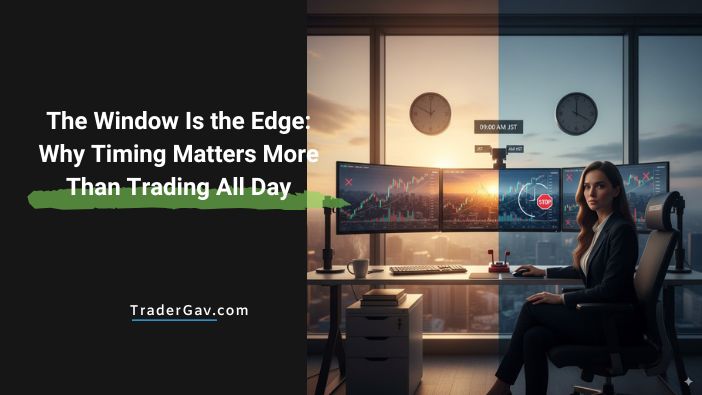
Most traders think edge lives in the chart.
Patterns, indicators, setups.
But this week reminded me that edge often lives in time.
I’ve been trading Tokyo mornings with smaller probes.
The pattern is clear: the first 90 minutes tell the truth. Moves are clean, the flow is directional. After that, the market slides into chop. Price flicks above and below VWAP, nothing sticks, and the mental cost rises with every candle.
The difference between those two windows isn’t subtle.
In the morning, I can place a trade with structure. Stop above anchor, target at a nearby high. If it works, partials are booked. If it doesn’t, stop gets hit clean and I’m out. By midday, the same logic doesn’t hold. Levels blur. One candle takes back the last three. There’s no reward for discipline, only noise.
It’s tempting to keep pushing. The screen is open, the tools are ready, the itch is there. But edge isn’t available all day. Recognizing when your edge is present and when it’s gone is as much part of the job as entry or exit.
This isn’t just about Tokyo. London opens give similar clarity.
Early, when volume is fresh, the market declares itself. Later, the grind takes over. I’ve learned it’s better to shut the book after the first clean hand than sit through a long, messy game.
The same pattern applies outside trading.
Writers know their sharpest hours.
Runners know when their stride feels easiest.
Builders know the window when focus comes without friction.
That’s where the real work gets done.
The mistake is trying to be “on” all day. Edge doesn’t scale like that. It narrows. It asks for respect.
So this week’s reminder was simple: my edge isn’t just what I trade, it’s when. Tokyo mornings. London opens. That’s my window. My job is to guard it, trade it cleanly, and step aside when it closes.
The rest isn’t wasted time. It’s preserved capital, preserved energy, and preserved clarity.
Because the window is the edge.


Leave a Reply